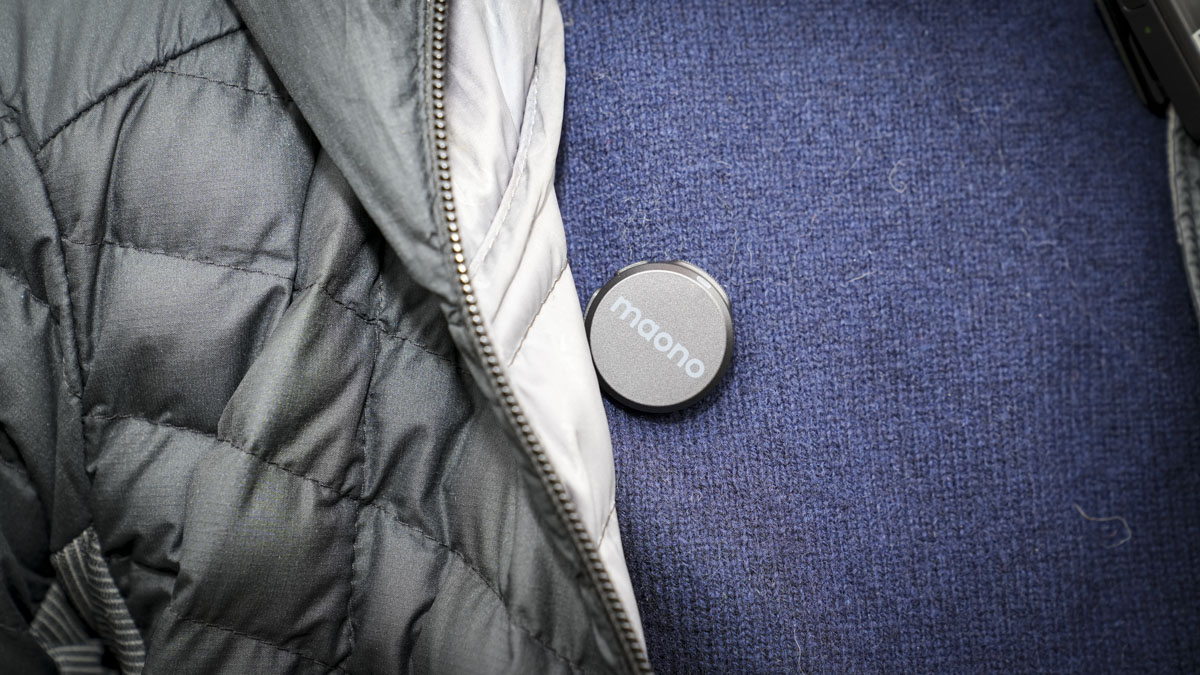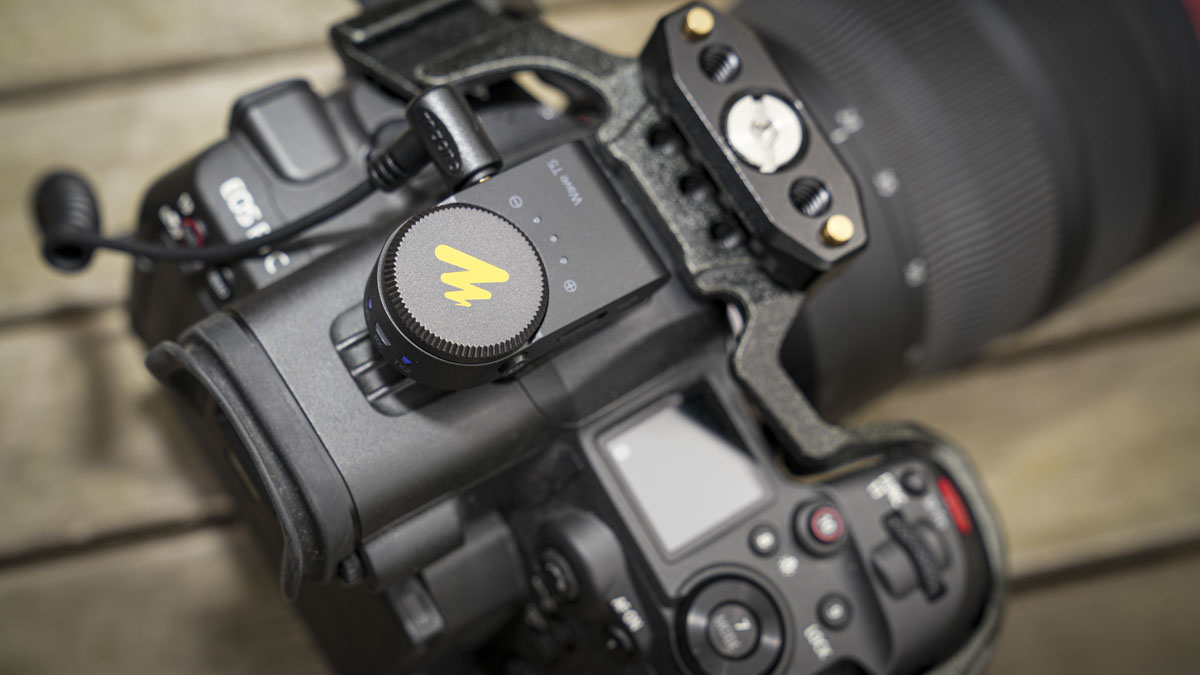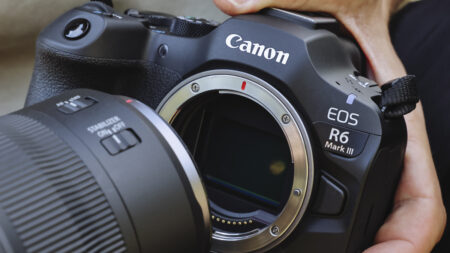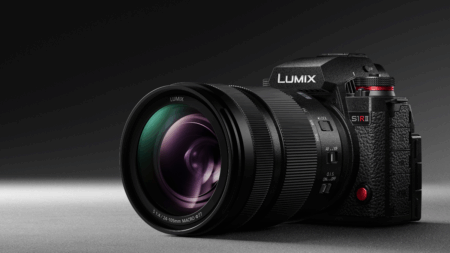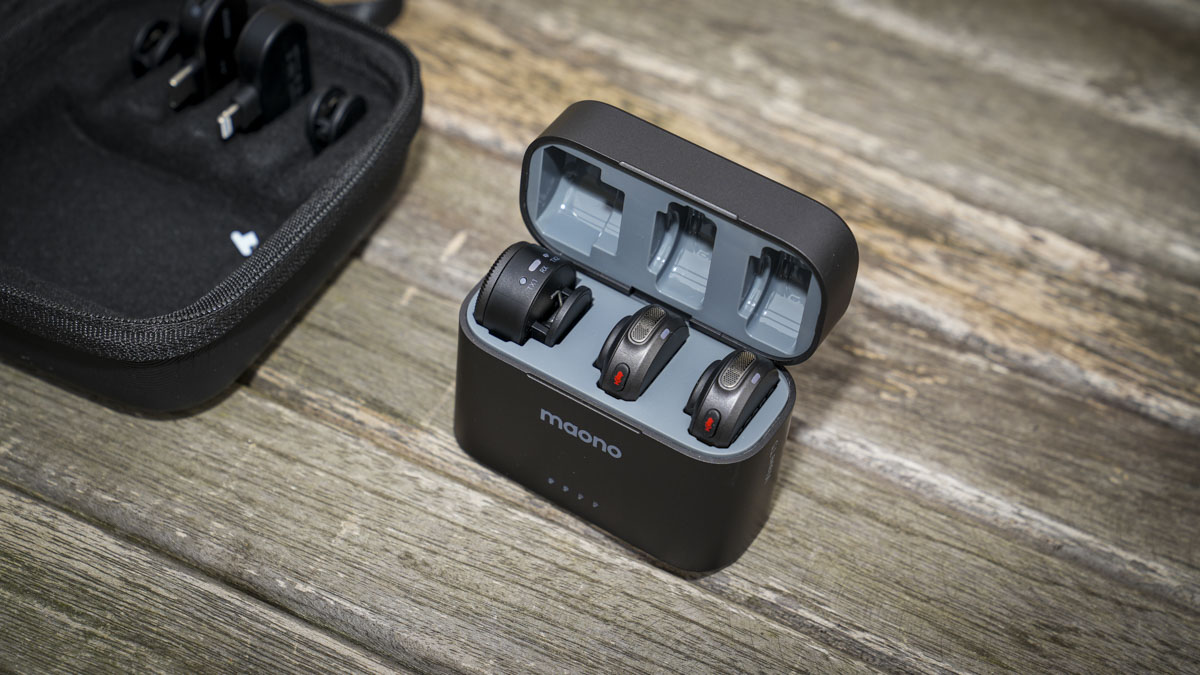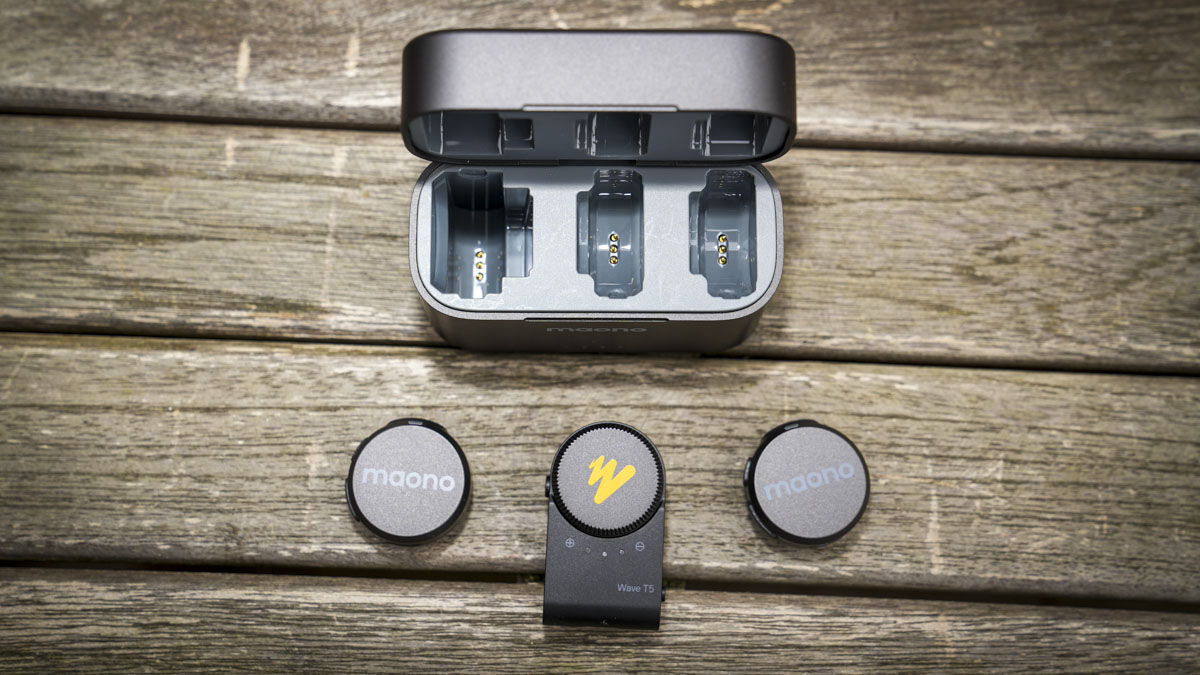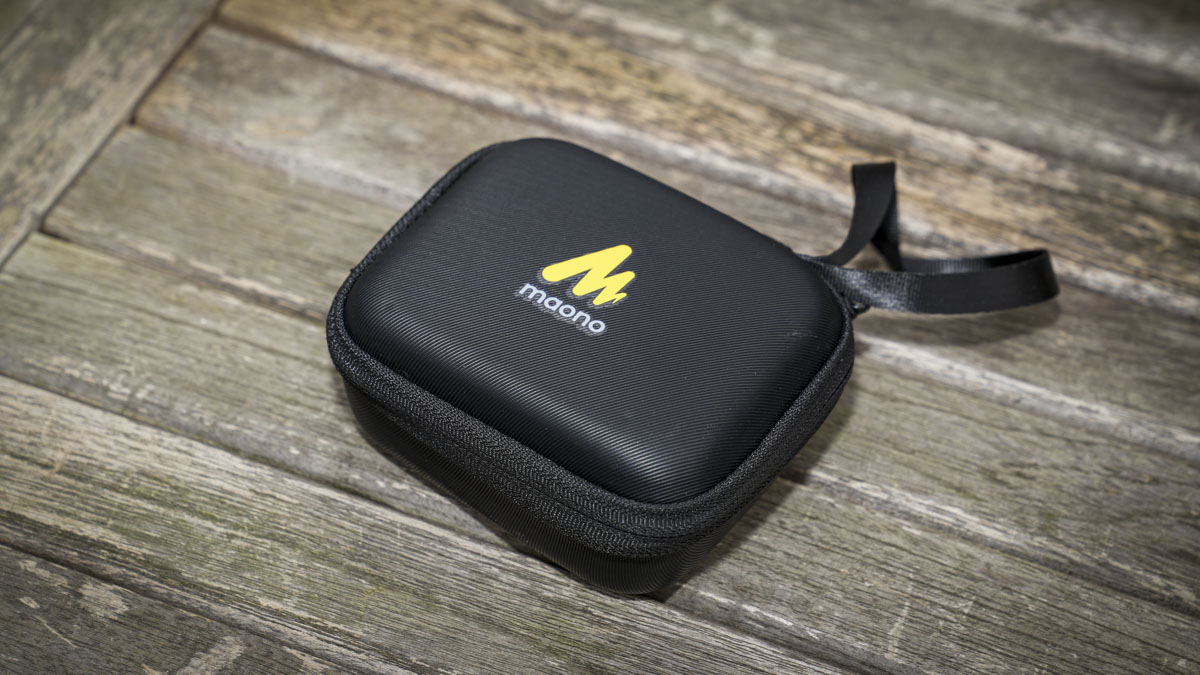First and foremost, the Wave T5 wireless microphone system is really nice and easy to set up. I started using it with the Apple iPhone 15 Pro, which gives you a really good idea of how quick and simple the system is to use.
Once you’ve taken out the wireless receiver and plugged it into the base of your phone, the two wireless microphones are instantly picked up, highlighted by two blue LEDs that appear on the receiver. You can then open up whichever recording app you want, and you’ll instantly get access to the two microphones. So, if you want to do an interview with an interviewer and interviewee, it’s ready to use straight away. There’s no need to download any app—it will just utilise the standard Apple app. Likewise, if you’re using an Android phone, it will work in exactly the same way. This is as quick, easy, and straightforward as any wireless microphone system on the market at present, and what’s good about it is that the mic pickup quality is actually exceptionally good.
However, that’s only half the story when it comes to mobile phone connection. If you download the Maono Link app, you can take the use of the microphones to the next level. First and foremost, it allows you to monitor the microphones, but it also enables you to update firmware as and when it becomes available. Keeping an eye on firmware updates, like with any piece of electronic equipment, is essential to ensure you get the best possible quality from these devices.
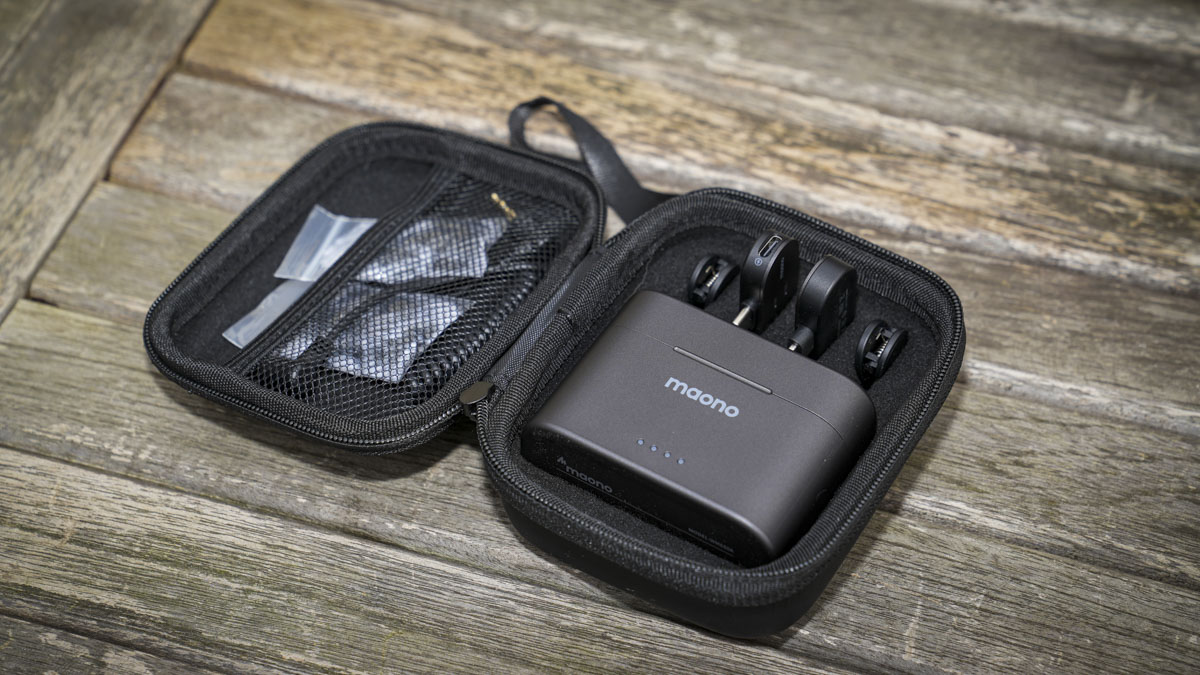
During testing, when I made the first firmware update for the transmitters and receivers, there was a noticeable improvement in noise reduction quality. So, I would highly recommend that if you go for these wireless mics, your first step should be to download the app and update the firmware to the latest version.
Once that was done, I was able to take full control of the wireless system. Opening up the Wave T5 app, the first thing you see is the microphone gain, which can be adjusted using a simple slider from 1 to 20 to increase or decrease the audio gain. At the top of the screen, you can also see the battery levels for Mic 1 and Mic 2. On the left-hand side, there are two icons for Mic 1 and Mic 2. By tapping each of these, you can quickly mute either microphone, and if you use the mute button on one of the wireless mics, it will also appear in the app interface—a really nice touch.
Below the mic gain section, there’s the noise reduction setting, which can be changed from “Slight” to “Strong” or set to “Custom,” with the custom option allowing adjustments from level 1 to the maximum of 14. Through testing, I found that a moderate level worked best. There’s also a sound enhancement option, which noticeably boosts vocal quality. Likewise, there’s a phone speaker output option, enabling you to adjust the quality when picking up phone audio alongside your voice.
One feature I really like—is the ability to switch from mono, where all audio is recorded onto one channel, to stereo, which separates the two microphones onto separate channels. This means that if one person is slightly louder than the other, you can separate them in post-production and adjust the audio levels individually. Unfortunately, even when using this feature through the app, only one level graphic is displayed, so you can’t actually see the split between the two wireless microphones.
So, that’s the experience of using the wireless microphone system with a mobile phone, and to be honest, it works really well—especially once you’ve downloaded the app, which elevates it above most other wireless microphone systems at this price. However, alongside using it with smartphones, you can also use it in a more traditional way with a mirrorless or DSLR camera, as long as it has a mic input option.
Using the mic with a mirrorless or DSLR system means you can’t use the app, so setting noise reduction has to be done using the options on the side of the wireless transmitter. This makes it a little trickier to adjust.
Otherwise, the rest of the operation of this wireless microphone system is very straightforward. The receiver slots neatly into your hot shoe, and you can connect the included 3.5mm cable from the wireless receiver to the audio input on your camera. Unfortunately, there’s no headphone jack for direct audio monitoring, so you have to monitor the audio through the camera itself.
One nice feature is the large dial, allowing you to easily adjust the input volume. If you enable noise reduction on the two transmitter mics, you’ll be able to check the noise reduction quality, although it’s worth noting that settings adjusted via the app do not transfer when using the system directly with a camera.
It’s also worth noting that if you want to switch from mono to stereo, you need to slide the switch on the side of the receiver. This switch is quite small and a little tricky to see, but as it’s the only sliding switch on the unit, once you know where it is, it’s easy to use. As standard, the receiver is likely to arrive set to mono, so just push the switch forward to enable stereo. For most recordings, I found that using stereo rather than mono works much better.
Beyond that, like using it with a smartphone, the setup is really simple and straightforward. Just get the two people you’re recording to start talking, adjust the input volume using the dial, and ensure you’re monitoring the audio through the back of the camera—preferably with headphones as well.
Once the audio input is slightly adjusted, the quality is exceptionally good. Considering the price of these microphones, the overall quality rivals some far more expensive units.
Throughout testing, including a few interviews, the audio quality remained exceptionally good. Although I didn’t test the distance beyond 3–5m from the camera, the signal strength seemed strong, and the audio remained reliable without any noticeable dropouts.
Overall, at the end of testing, I was really pleased with how good the audio quality was, along with all the additional features. Some of the highlights included the app, which enhances functionality when used with a smartphone, and the quality and level of adjustment available when used with a mirrorless or DSLR camera. The fact that it comes with a semi-hard case and all the accessories needed to get started also adds to the value of the system.
